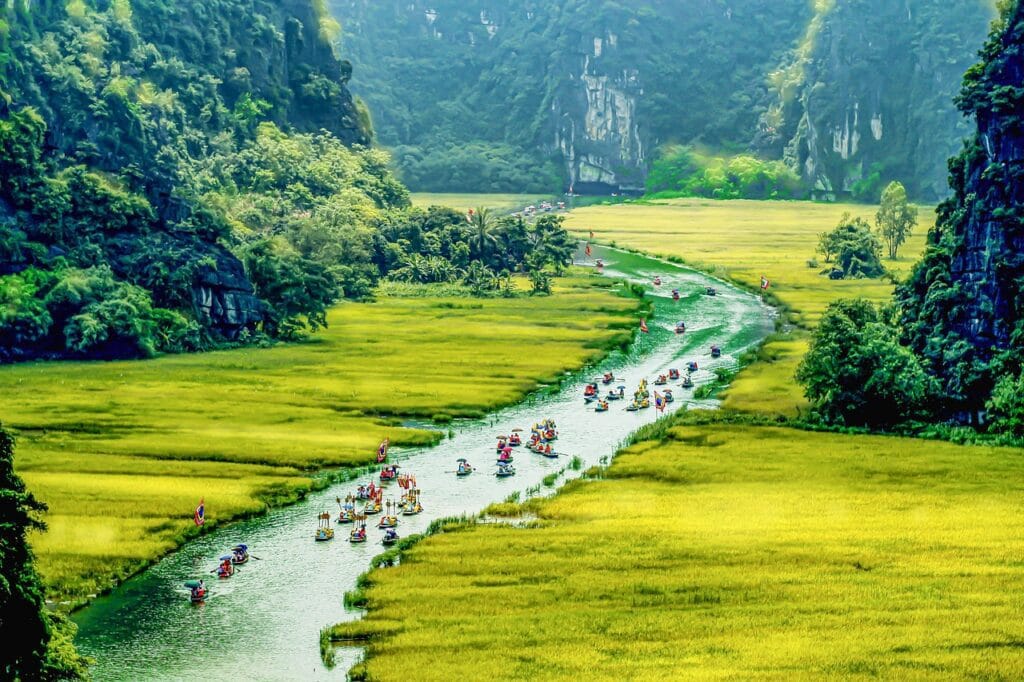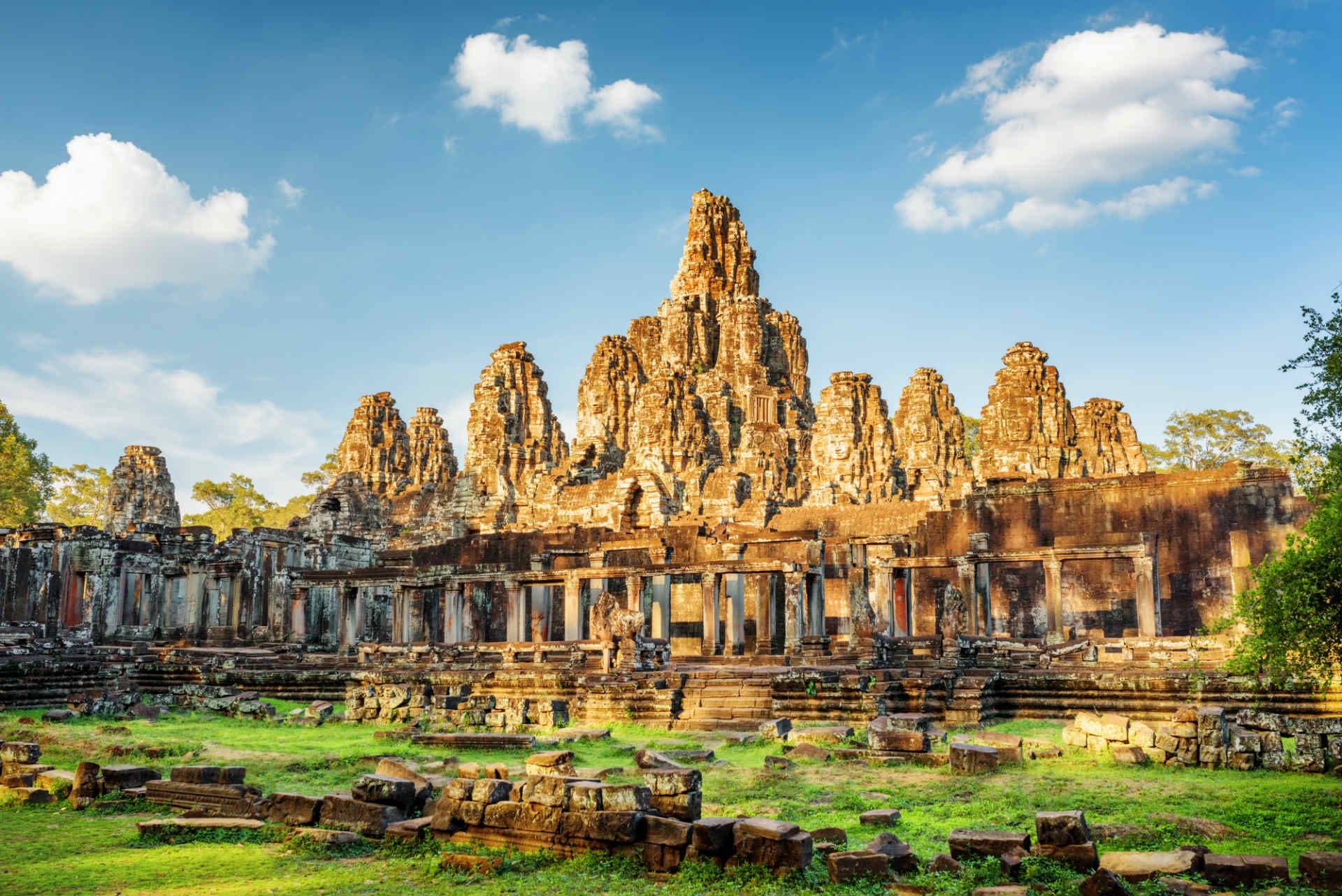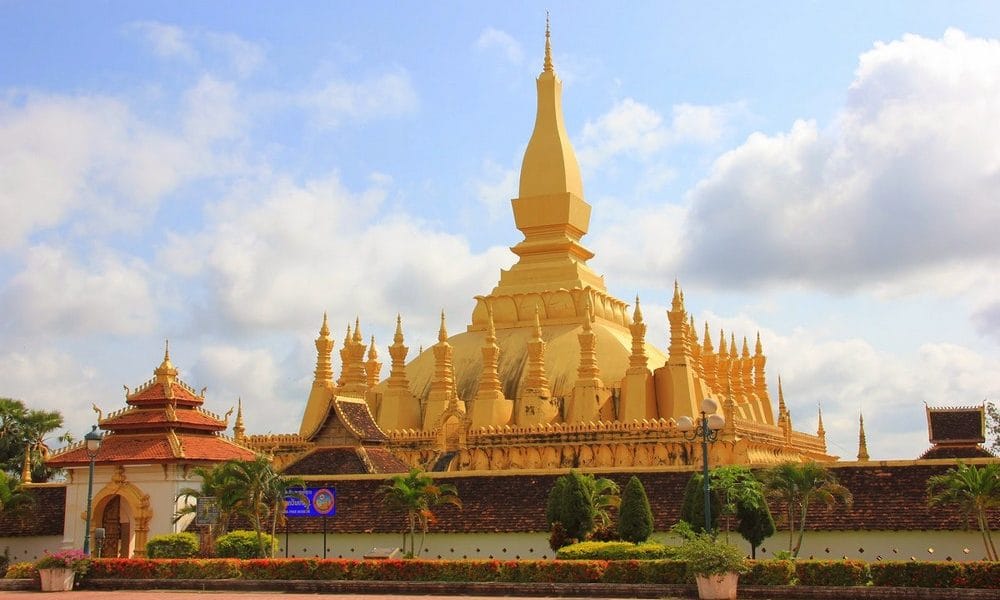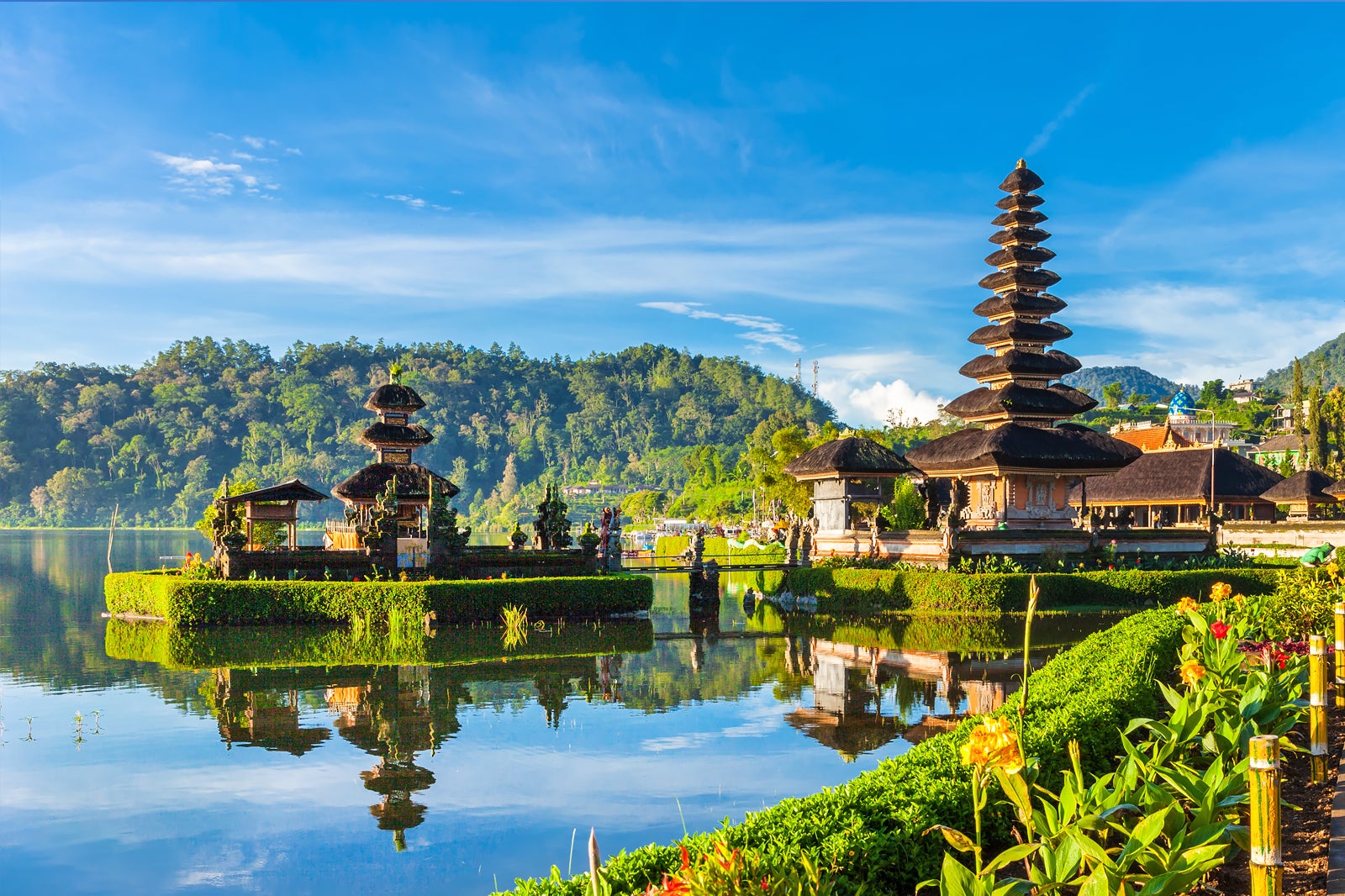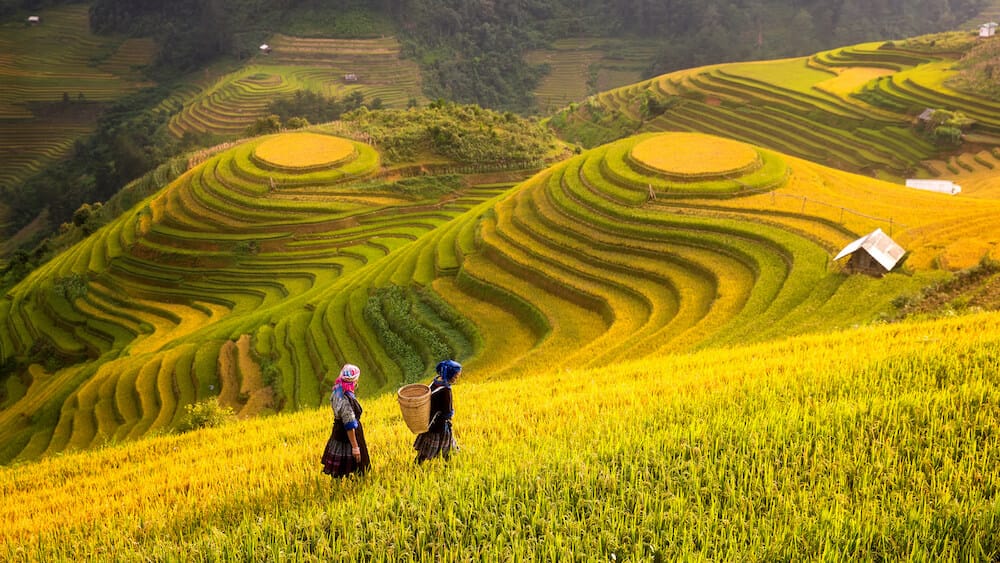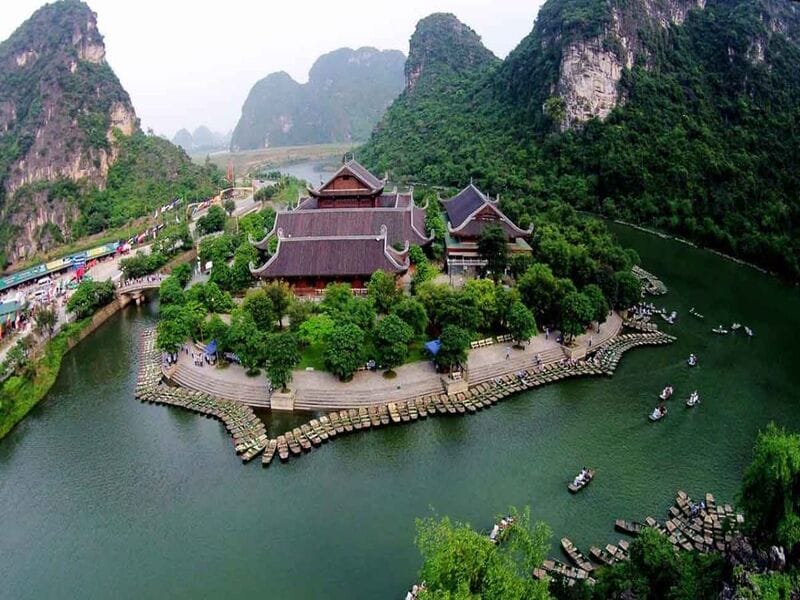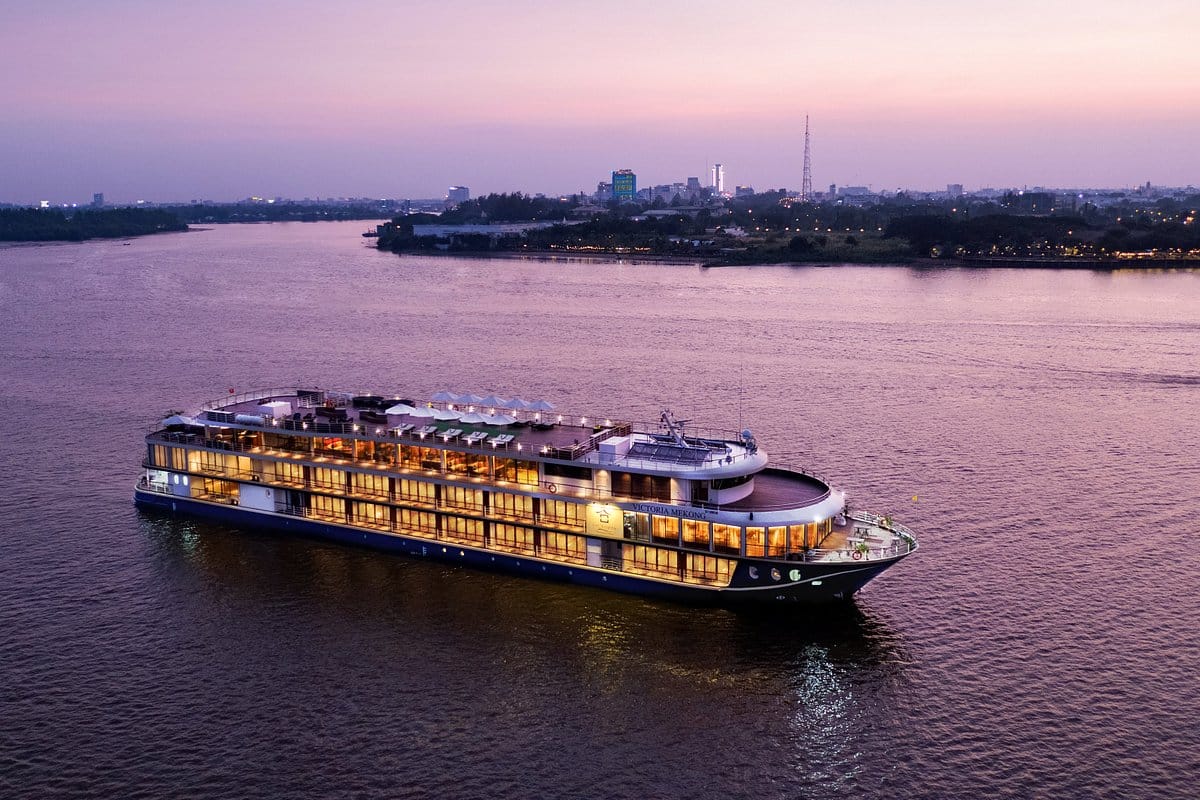Sapa Stone Church, officially known as the Church of Our Lady of the Rosary, is one of the most iconic landmarks in Sapa. Situated at the heart of Sapa town, it faces the majestic Ham Rong Mountain and stands as a beautiful example of early 20th-century French architecture.
1. Architectural Features
1.1 Location and Historical Significance
Built during the French colonial era, Sapa Church was designed not only as a place of worship but also as a cultural hub for the local community. The church faces east, welcoming the sunrise and symbolizing the light of God, while its bell tower faces west, representing the birthplace of Christ. Today, it remains a central venue for cultural events, festivals, and community gatherings. The local government has preserved and restored the church several times to serve both residents and visitors.
1.2 Architectural Style and Materials
The church follows Romanesque Gothic architecture and is constructed mainly from stone, with roofs, arches, and bell towers designed to exude elegance and strength. Stones are bound with a traditional mixture of limestone, sand, and molasses. Notably, the sandstone wall on the right side of the crucifix resembles natural stalactites, adding a unique and ancient beauty to the structure.
1.3 The Unique Dome and Roof
The roof is covered with striking red tiles arranged in a triangular shape, with simple yet graceful edges. While the ceilings were originally made of straw and have been renovated over the years, the steeple remains a rare combination of lime, straw, and iron — a testament to its durability over time.
1.4 Colors and Details
The church is predominantly white, which highlights its elegance and creates a spacious, airy feel. Wooden panels line the side walls for easier maintenance, and the upper doors feature semi-circular designs adorned with colorful stained glass, adding vibrant touches to the facade.
1.5 The Grounds
Covering over 6,000 square meters, the church grounds are divided into several areas: the main church, monks’ living quarters, livestock grounds, a celestial house, a spacious front yard, a fence, and a Holy Garden. The garden features two tombs surrounded by five ancient “Khao Vang” trees and four trees growing on rocks, creating a peaceful, sacred atmosphere.
The church itself includes seven rooms spanning 500 square meters, and a 20-meter-high bell tower with a smaller internal tower weighing 500 kilograms. When rung, the bell’s sound can carry up to one kilometer.
2. Interesting Activities Around Sapa Church
2.1 Perfect Photo Spots
With its stunning design, the church offers many great photo opportunities. Some of the best spots include panoramic views of the church and Sapa Square, the connecting stairs between them, and the beautifully illuminated church in the evening.
2.2 Explore the “Cho Tình” (Love Market)
Held every Saturday night, the Love Market is a unique cultural event where ethnic minority communities gather. It’s a great chance to experience local customs, shop for souvenirs, and enjoy the vibrant atmosphere.
2.3 Cultural Performances
At the Love Market, you’ll find traditional music and dance performed by locals and neighboring ethnic groups, enriching the festive spirit of Sapa.
2.4 Taste Local Specialties
Don’t miss the chance to savor Sapa’s culinary delights like fresh salmon hotpot, armpit pork, and fried stream fish. Whether in a renowned restaurant or a roadside eatery, the flavors of Sapa’s autumn and winter dishes are especially memorable, enhanced by the cool mountain weather.
3. Sapa Church Through the Seasons
Many visitors ask when is the best time to visit Sapa Church. According to Lily’s Travel, each season offers its own unique charm:
- Spring:The town blooms with cherry blossoms and budding trees. The sounds of birds and festive Tet celebrations fill the air, making spring a joyful and refreshing time to visit.
- Summer:Golden rice fields and the scent of kitchen smoke create a nostalgic, peaceful atmosphere reminiscent of childhood and home. The church in summer exudes gentle beauty, especially at dusk.
- Autumn:Known for its calm and pleasant weather, autumn is a favorite season for visitors seeking a tranquil and picturesque experience.
- Winter:The church looks serene under the occasional snowfall, with a cozy warmth inside that contrasts with the chilly outdoors.
Sapa Stone Church is not just a historical monument but a living symbol of the town’s cultural heart. This article is the first in a series exploring Sapa’s treasures through the eyes of a young traveler. Hopefully, you’ll find inspiration here for your own journey to this enchanting mountain town.

